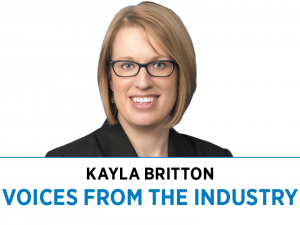Subscriber Benefit
As a subscriber you can listen to articles at work, in the car, or while you work out. Subscribe Now In March 2020, banks were preparing for a barrage of troubled loans. Federal and state legislation and executive orders created a web of red tape for lenders to navigate. Public and governmental pressure to forbear from loan enforcement intensified, and the rules seemed to change continually. Banks were thinking about lender liability on a near-constant basis.
In March 2020, banks were preparing for a barrage of troubled loans. Federal and state legislation and executive orders created a web of red tape for lenders to navigate. Public and governmental pressure to forbear from loan enforcement intensified, and the rules seemed to change continually. Banks were thinking about lender liability on a near-constant basis.
Two years into the pandemic, most COVID-19 restrictions on foreclosures, evictions, and other enforcement have expired. But the flood of troubled loans has not come. Workout tools may be largely dormant in the current environment. When the economic downtown inevitably occurs, lender liability claims will surely follow.
What is lender liability?
Lender liability may be presented as an affirmative claim in favor of the borrower or other party or as a defense to liability under the loan documents.
If a lender liability claim is successful, a lender may be liable for losses sustained by the borrower or a third party directly or indirectly caused by the lender’s actions or inactions, or the lender’s deficiency judgment may be waived.
In extreme cases, the lender’s debt could be equitably subordinated to the claims of other creditors.
Minimizing risk
Lenders should remain mindful of potential exposure and take proactive measures to minimize their risk.
Develop a workout strategy: If there is a risk that the debt may not be fully collateralized, consider the strategy for any deficiency claim. Lender liability risks increase when enforcing a deficiency claim, and lenders must carefully evaluate the claim’s actual value. If a guarantor is a viable repayment option, lenders may elect to avoid certain non-judicial foreclosure alternatives to mitigate potential defenses to the guarantor’s liability.
Avoid sudden moves: Provide advance notice of any enforcement action if practicable. Absent fraud, misconduct, or other extreme circumstances, do not rely on provisions permitting the lender to accelerate a loan or invoke other remedies without notice.
Avoid inconsistent or misleading communications: Review prior communications—including emails—to determine what has been communicated to the borrower. Defaulted borrowers often claim that the lender “promised” to extend the loan or waive defaults. Assign one person as point of contact to the borrower.
Avoid veiled threats: Do not make demands or offers without internal approval. Credit approvals and internal correspondence are often discoverable in litigation. Ensure correspondence is clear regarding any agreement terms and whether a term sheet remains subject to internal bank approval.
Honor your commitments: If the bank has suggested that it will work with the borrower, consider whether the bank is bound by that commitment. Comply with contractual obligations and formal commitments. Consult with workout counsel before relying on a material adverse change or insecurity clause to enforce the loan or refuse to advance funds.
Avoid taking control of the business: The lender-borrower relationship should remain arms-length. Lenders should not provide advice to the borrower or manage the borrower’s business. Do not direct the borrower regarding which employees to terminate, assets to sell, or creditors to pay.
Lenders may require delivery of a budget under the terms of a forbearance agreement, but the lender should not be involved in the preparation of the budget. If a lender has concerns about the borrower’s management, appointment of a chief restructuring officer or a third-party adviser may be required as a condition to a forbearance or loan extension.
Don’t benefit at the expense of others: Lenders should not communicate with employees or other creditors. The borrower’s business should not be operated for the benefit of the lender and to the detriment of other creditors. The borrower must make all business decisions while the lender decides whether to continue the financial relationship or pursue remedies.
Keep good records: Document all agreements, performance deadlines, and extensions. Limit internal communications about the relationship, as those are discoverable in litigation. Record events objectively and accurately. Document any deterioration in the lender’s collateral position.
Transfer a troubled loan to a workout officer: Workout officers provide a new perspective. Transferring responsibility for a loan may help the borrower take the situation more seriously.
Confer with workout counsel: Workout counsel can assist the bank officer in implementing a default strategy and assessing issues with collateral perfection, documentation, and risks of potential counterclaims. Communications with workout counsel are protected by attorney-client privilege.
Be professional: When a borrower defaults, be prepared for potential litigation. The perspective of a judge or jury should guide lender’s decisions. Lender’s actions should be perceived as fair to the borrower.•
__________
Britton is an Indianapolis-based finance and restructuring partner at Faegre Drinker.
Please enable JavaScript to view this content.
